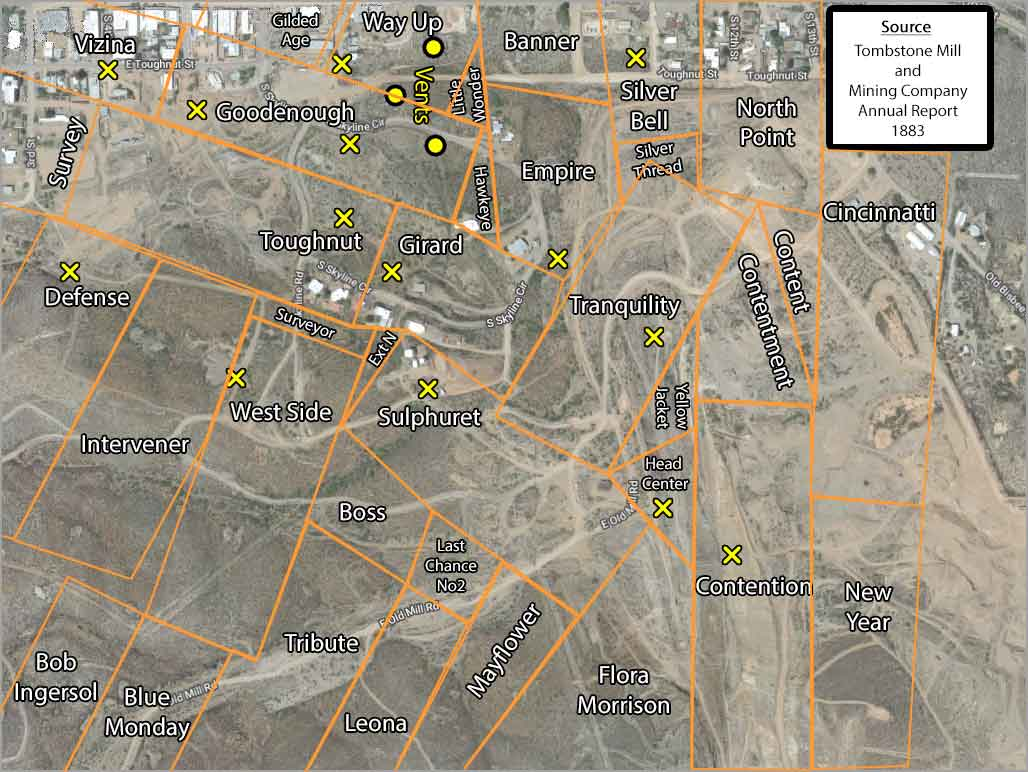Despite the Hollywood depictions of gambling and gun-slinging, Tombstone was a mining town. Another post on this site describes the Tombstone Mining District, an area of about 100 square miles with Tombstone near the northwest corner. The district had more than 100 active mines, but the most productive ones were in or near Tombstone. The Epitaph reported some interesting numbers, "…mining bullion from November 1, 1881, to January 1882 also indicated Tombstone had done well. The output for the Toughnut group, which consisted of the Contention or Western, Grand Central, Head Center, Vizina, Ingersoll, Sunset, and several other underdeveloped mines, was $6,488,361." The Grand Central employed 90 men, the Contention 102, Tombstone Mine 200, and the Vizina 50. The number of men employed at the principal mines throughout the Tombstone area totaled 637. That did not include approximately one hundred more who did contract and assessment work independently. (These numbers came from Sherry Monahan; Tombstone's Silver Mines and Golden Saloons; ASIN: B004IYKVSK, pages 27 and 30.)


